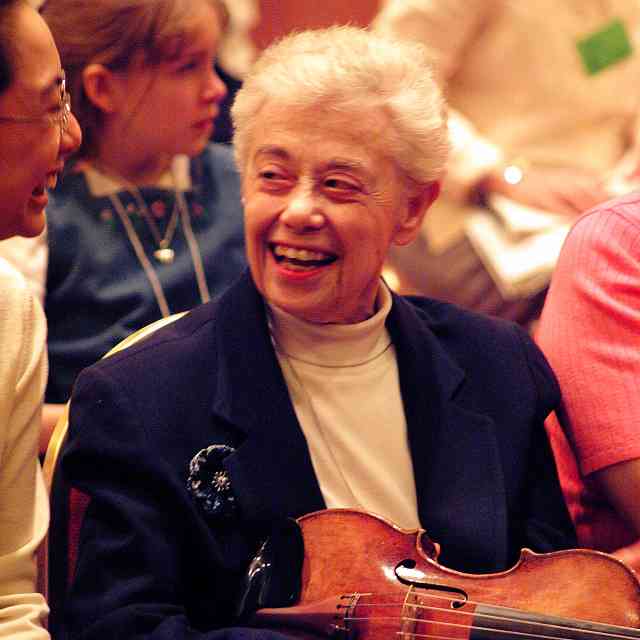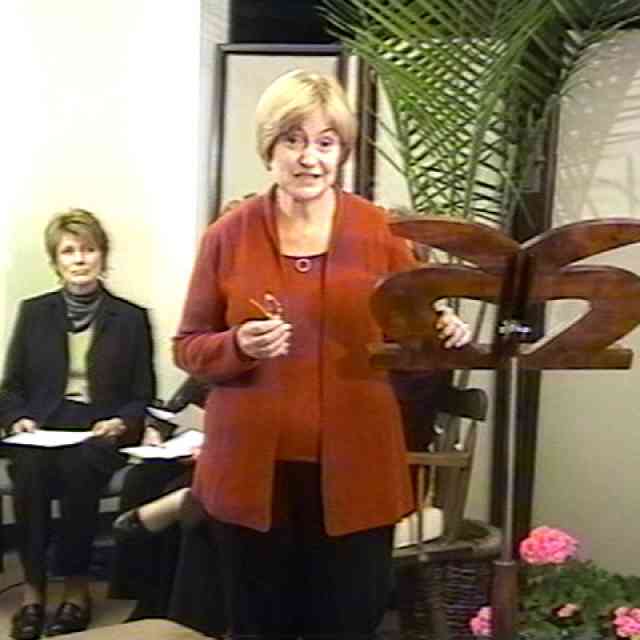Meet newly-appointed SAA Board of Directors Chair-elect Marilyn Kesler. Kesler begins her two-year term as chair-elect on August 1, after which she will become board chair.
How were you first introduced to the Suzuki Method?
I read John Kendall’s article “The Ten Stereotypes for Teaching String Education” when I was at Indiana University as an undergraduate and wrote a thesis paper on it. I wrote to John Kendall, and found out what Suzuki was compared to the normal teaching style. There was no one who was really doing Suzuki at that time; that was 1963. Then, I ended up in Alton, Illinois, and found out that John Kendall was teaching in Edwardsville. I went to him and enrolled in the master’s degree program and took night classes. I taught general music in Alton public schools, and I went to night school and got my master’s degree, and then moved to Okemos, Michigan, and I taught in Okemos for forty-two years. I was the first Suzuki cello teacher at the first Suzuki Institute, which was in Stevens Point. Through my work with the growing cello program at Stevens Point, we developed the Suzuki cello book.
I heard the Talent Education Tour Group when John Kendall brought them to Alton, and it was amazing. I had already started working on the cello books at that point—that was my master’s degree, adapting the violin method to the cello.
Have you always played the cello?
I started cello in the fifth grade. My father was a violin professor. My mother was a piano professor. I had private lessons, but I started in the public school. There was no such thing as Suzuki.
What did you like about being a public school teacher?
In Okemos, there is a lot of support for music education. I had wonderful students, and wonderful parents. I started a Suzuki program there. We had the longevity of students and the student-parent relationship with the school, because the students would start at the age of five or six. We developed a huge string program, a strong orchestra program; I can attribute a lot of the success of that program to the Suzuki Method. The Suzuki Method was taught through the community education program through the schools, and still is. I’m still the director of that. We had a lot of kids who felt music was an important part of their life and their education, so there was a lot of support.
The person who took my place is a former student, and the teachers who are teaching strings in the orchestra are all Suzuki teachers.
How has the SAA given you support over the years?
The growth of teacher training in the state of Michigan is a result of the SAA—teacher training, institutes, teacher training in trainers’ studios. We’ve developed quality string players and supportive parental backing. We couldn’t have done it without the Suzuki Association. Of course, I’ve been doing institute teaching ever since I was about twenty-three years old. It’s changed my life.
How long have you been on the Board?
This is the end of my third year. I also play in the Lansing Symphony, and I teach Suzuki cello students in a Suzuki program. I do a lot of guest conducting.
By being on the board, you remain current, you’re involved, and you see beyond your own neighborhood borders as to what is going on with Suzuki and the possibilities. That keeps you moving forward and not looking back.
What are some of those possibilities you see?
I see the growth of what’s going on in Latin America, and it’s terrific. I see the visions of trying to make Suzuki available to all the children in various parts of the country. That’s a vision we have, and trying to make that work is a pretty tall order.









